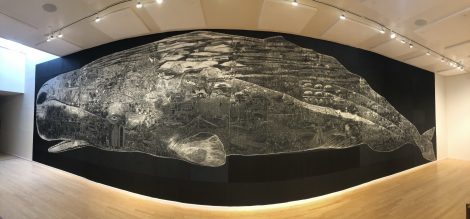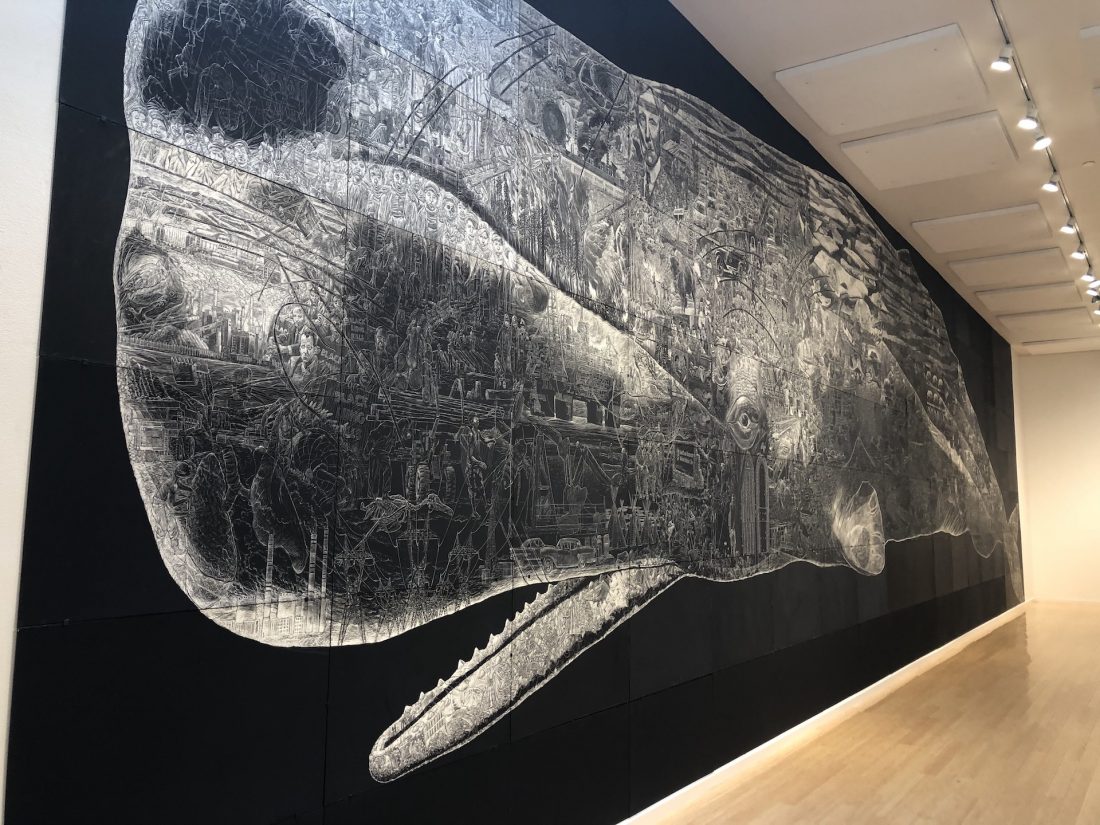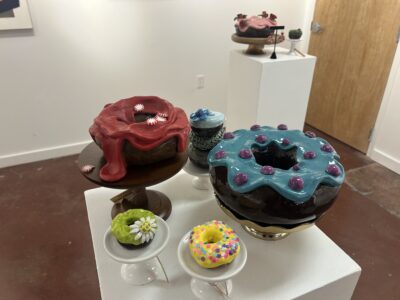Life-size scratchboard whale, depicting history of American capitalism, showing at Lawrence Arts Center

photo by: Lawrence Arts Center
Jos Sances' "Or, The Whale"
A 51-foot-long scratchboard whale is currently on display at the Lawrence Arts Center, and Gallery Director Ben Ahlvers said it’s “one of the more incredible works of art I’ve ever been able to see in person.”
The giant piece, filled with images depicting the history of American capitalism in the whale’s body, took artist Jos Sances eight months to make.
“I would draw her all day. I never got tired of it,” he said in an interview with the Journal-World on Friday. Sances, who lives in the San Francisco Bay area, is now retired but worked as a printmaker and muralist for over 40 years.

photo by: Lawrence Arts Center
Jos Sances’ “Or, The Whale”
Sances’ piece “Or, The Whale” is named after the subtitle of Herman Melville’s famous novel “Moby-Dick.” Sances admitted that he had skipped the book in high school and relied on the CliffNotes. He read it again in the ’70s but said he didn’t understand it. It wasn’t until after Sances began traveling to Mexico for vacation and had been out among whales in the ocean that he decided he should read it again. His wife bought him a 1934 “Moby-Dick” illustrated by Rockwell Kent.
Then, he was hooked.
After reading the analysis of “Moby-Dick” in C.L.R. James’ book “Mariners, Renegades and Castaways,” Sances came to view the titular whale as representing capitalism playing itself out in the natural world. (The symbolism of the whale is often debated by scholars.)
“Or, The Whale” depicts topics such as mining, John D. Rockefeller and oil, slavery, women’s suffrage, railroads and the gold rush, excessive wealth, poverty and more.
“Most of what I’m depicting is kind of about exploitation of labor and natural resources,” he said. “For me, my biggest and most major concern is the environment and preserving what we have and trying to reverse the climate crisis.”

photo by: Lawrence Arts Center
A closer look at the images of the history of American capitalism displayed within the body of Jos Sances’ “Or, The Whale”
Sances said his three grandchildren are featured in the piece, and that he made it for them in “hope for their future.”
Ahlvers called it “totally relevant to everything that’s happening in the world right now.”
“I’ve never seen anything that encompasses so much history and information and does it in a way you could almost get lost in,” he said.

photo by: Lawrence Arts Center
A closer look at the images of the history of American capitalism displayed within the body of Jos Sances’ “Or, The Whale”
Sances said using scratchboard as his medium was not only enjoyable but also further connected the piece to “Moby-Dick.” He related the process to scrimshaw, a practice in which engravings and carvings are made in bone or ivory. Often, scrimshaw is completed on whales’ teeth. Sances also said scratchboard pieces have a similar feel to tattoos, and one of the main characters in “Moby-Dick” — Queequeg — has a body covered in tattoos.
Sances completed “Or, The Whale” in 2019, and it has only been on display in two places prior to arriving in Lawrence.
“Or, The Whale” opened Friday at the Lawrence Arts Center, 940 New Hampshire St., and will show until Sept. 26. The exhibit will be open Mondays through Saturdays, 10 a.m. to 7 p.m., and Sundays from 1:30 p.m. to 7 p.m. The exhibit is free, and attendance in the exhibition room will be limited to 10 people at a time.

photo by: Lawrence Arts Center
Jos Sances’ “Or, The Whale”







